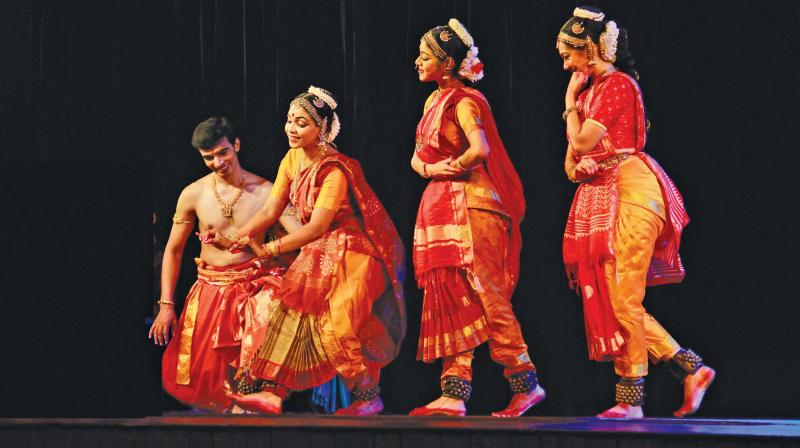Tranquility as nayika highlight of Sanjana''s dance

One has always admired Radhika Shurjit as a teacher. Her students almost invariably display a good style, technique and stances that justify this admiration. One has seen her group perform innumerable times with the lighter editions of melodies, classics and popular genre and have always found a willing and happy audience that appreciates and lauds her endeavours.
Of course the test of her actual training comes through in the solos and in the way her students perform - as it was with Sanjana Prasad. Sanjana (also trained by Meenakshi Chittaranjan and Minal Prabhu) who has a good stage presence performed at the RR Sabha Mini Hall as part of 2018 Navarathri Dance Festival (one is absolutely losing track of the number of dance festivals that are mushrooming all year around) and to her credit, did a good job of the pieces selected for the evening.
A bit of a jerky start with the invocatory one, a Ragamalika and Talamalika, Sanjana paid obeisance to Ganesha and other deities that are part of the beginning of any recital. While the movements by themselves were correct and in form, there was a raciness that seemed a little out of sync at times.
This settled down in the main piece of the evening, the Tanjore Quartet Varnam in Shankarabharanam, Ati Moham, a really lovely one that brought out both the training and the adaptation of the learning. Both guru and disciple gave it their best in terms of the nattuvangam and the adavus, bhava and the stances that finished right on cue.
The korvais and jatis were energetic without seeming to be done in a hurry and there was a tranquillity about the nayika who looks to the lord and king with love and yearning. It is a very beautiful piece in choreography that when done with feeling comes across truly as a piece de résistance. Bringing more colour to this was the good vocal support (Radha Badri) - it helped to keep the tempo and the emotional content alive.
Without giving much of a break after the Varnam, Sanjana went on to the much loved Jayadeva’s Ashtapadi, Yahi Madhava (Mohanam) - the khandita nayika alternates between anger, bewilderment, sorrow and host of feelings when she realises that her beloved has been with other women. interspersed within this are mini tales of Krishna’s greatness and doings. This was done with a lot of finesse.
A Purandaradasa kriti, again a popular one- Chikkavane- in Ragamalika is inherently a lilting and catchy melody that instantly brings to mind the naughty and playful Krishna. And rightly so the artist brought that out without flagging in her bhava. In fact, the individual merged with the character and the effect was that of a transformation of song into visual delight.
Radhika knows her strengths and items are chosen for playing to that strength. It could seem repetitive or familiar, but that turns into an advantage when the student who has imbibed the best of that, puts it across on stage creditably and with bhakti. Orchestral support was excellent- T. K. Padmanabhan on the violin, Nellai Kannan on the mridangam, added much weight to the entire recital.

